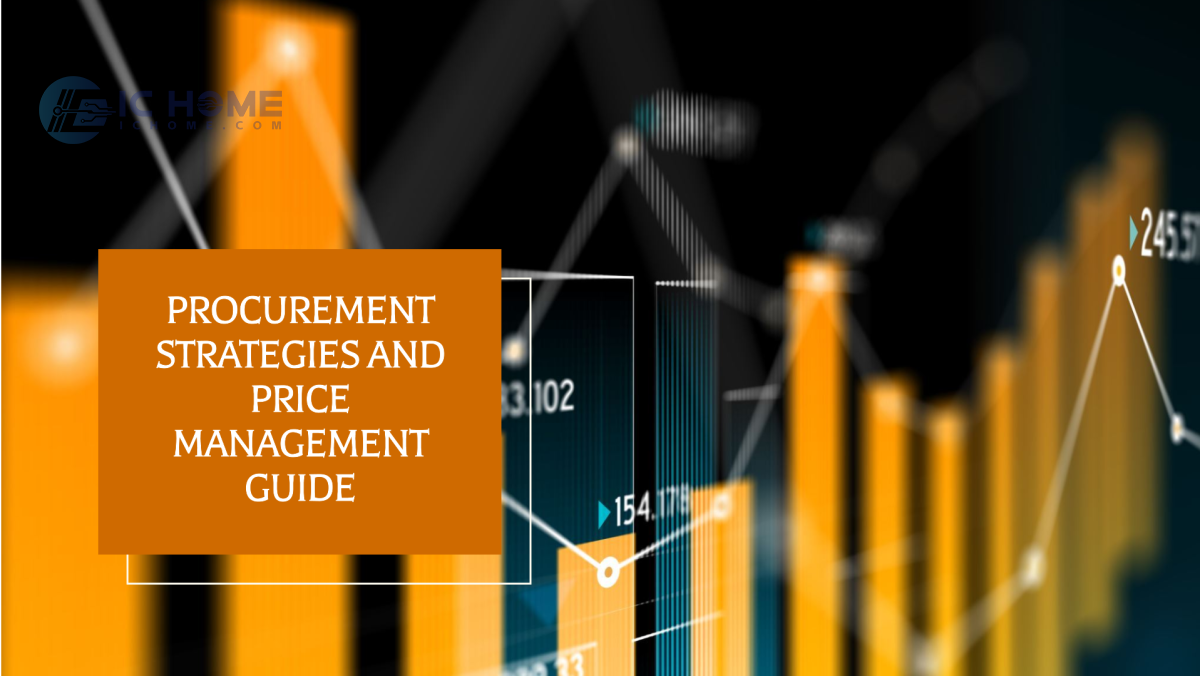How to Navigate Component Market Supply and Demand Fluctuations
In modern supply chain management, component procurement is a key link to ensure smooth production and cost control. Due to the dynamic fluctuations in the market supply and demand relationship, the prices and stability of component supply are often influenced by multiple factors, such as a sharp increase in demand, supply chain tightness, or raw material shortages. Procurement professionals must closely monitor these market fluctuations and adopt effective strategies to maintain procurement stability and continuous business operations in the face of price fluctuations and supply instability.

1. Price Fluctuations Due to Sharp Increases in Demand
With the emergence of new technologies and the release of popular products, the demand for certain components often increases dramatically. For example, the application of 5G, AI technology, and the popularity of electric vehicles may all lead to a significant rise in demand for specific components. When demand surges, suppliers may face delivery delays or price increases. To respond to price fluctuations caused by a sharp rise in demand, procurement professionals can:
Anticipate and Perform Forward Procurement: Procurement professionals can predict which components may experience price hikes due to demand surges by paying attention to industry trends, technology roadmaps, and market research, and can procure in advance.
Establish Close Relationships with Suppliers: Maintaining good communication and cooperation with suppliers ensures preferential supply during peak demand periods.
2. Price Increases Due to Supply Chain Tightness
Global supply chain tightness, especially post-pandemic, has led to sharp price fluctuations for components due to raw material shortages, transportation issues, and other factors. For example, certain components may rely on scarce materials, or the production capacity of certain countries/regions may be impacted by political or economic factors. To address price increases caused by supply chain tightness, procurement professionals can:
Diversify Suppliers: Selecting multiple suppliers helps spread risks and prevents the entire production chain from being affected by shortages or price fluctuations from a single supplier.
Establish Long-Term Relationships: Long-term cooperation agreements with suppliers can secure price protection and preferential supply rights during tight supply periods.
Manage Inventory Wisely: Ensure adequate inventory of key components to avoid production interruptions caused by supply chain instability.
3. Flexible Procurement Strategies and Market Monitoring
When faced with component price fluctuations, procurement professionals need to closely monitor market dynamics and adjust procurement strategies flexibly. By tracking market prices, raw material costs, and supply chain changes in real time, procurement professionals can respond promptly and mitigate risks:
Dynamic Market Assessment: Regularly track price adjustments from suppliers and assess global market trends to predict price increases and decreases.
Futures or Price Locking Agreements: For certain critical components, procurement professionals can negotiate price locking agreements with suppliers to mitigate the risk of future price fluctuations.
4. Focus on Alternatives and Technological Advancements
With continuous technological advancements and new products being introduced, some components may be updated or replaced. Procurement professionals need to regularly assess new technologies and alternatives to address the pressure from price fluctuations:
Alternative Component Evaluation: When the prices of certain components rise due to surging demand or supply chain tightness, evaluate whether there are more cost-effective alternatives.
Monitor Technological Innovation: As technology advances, some traditional components may be replaced by new innovations. Procurement professionals need to closely monitor these changes and adjust procurement plans in a timely manner.
Conclusion
Component procurement is not just a simple transaction, but a strategic decision closely related to suppliers, the market, technological trends, and the global economic landscape. Procurement professionals need to stay informed about changes in the market supply and demand relationship, adopt flexible procurement strategies, and engage in forward-looking forecasting to ensure procurement stability and cost control. With well-planned procurement strategies and responsive measures, businesses can effectively manage price fluctuations and maintain production continuity and competitiveness.
As an electronic component distributor, we understand the importance of market dynamics and supply/demand relationships to our customers' purchasing decisions. We are committed to providing our customers with a stable and reliable supply chain to help companies maintain production continuity in the face of market fluctuations. With our extensive supplier network and in-depth market insights, we are able to provide our customers with timely market information, competitive pricing and flexible supply solutions to ensure that they are able to cope with any sudden market changes.




